Learn which Texas insects have stings that pack a punch!
As the chill of winter fades, the spring sun shines and Texas begins to blossom with life again. It's a great time to be outdoors! But humans aren't the only things becoming more active; insects wake up, too. They're an important part of the ecosystem, but sometimes they can have painful interactions with us humans! Today, we'll tell you which Texas insects have stings you'll want to be sure to avoid!
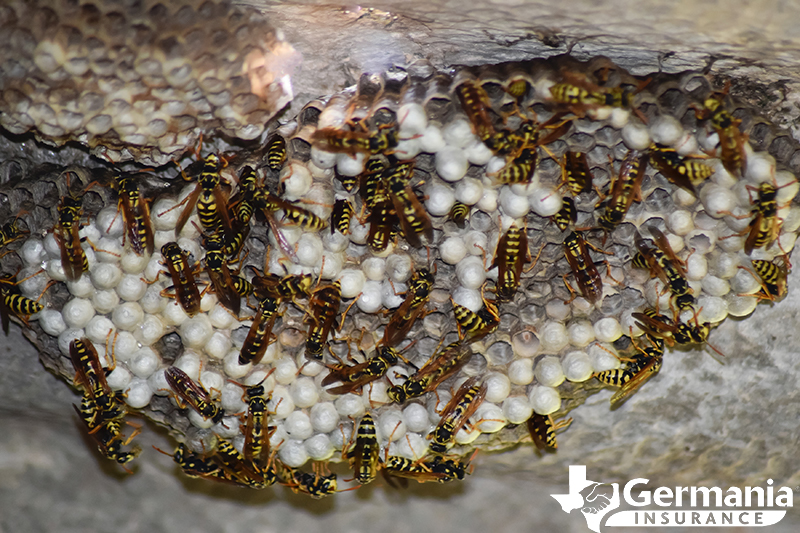
Texas insects that sting
Asps (flannel moth larva) (Megalopyge opercularis)
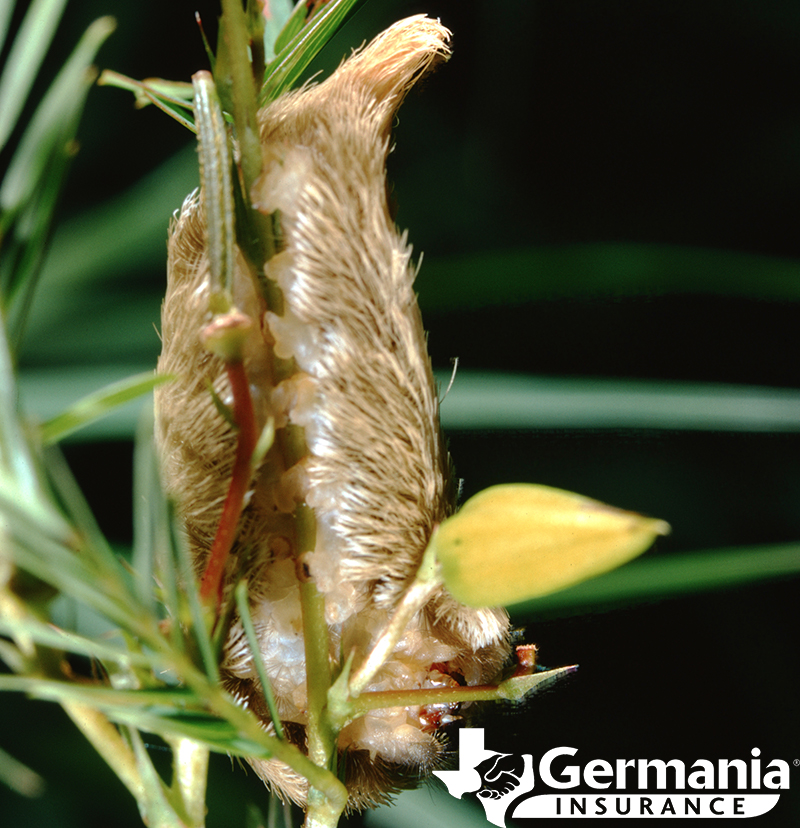
Cute and fuzzy? Yes. Cuddly? Definitely not! The flannel moth larva, also known as
The Texas Asp or puss caterpillars, may look soft to the touch, but it's actually lined with tiny spines that can inject a painful toxin. The sting is incredibly painful and can cause inflammation that lasts for several days, and can result in nausea and headaches as well.
While medical treatment may be required in severe cases, most stings can be treated with ice packs and antihistamines. Occasionally, the spines remain lodged in the skin, which can be removed with a strip of tape.
Unlike some of the other insects in our list, asps are fairly easy to avoid - they don't fly or crawl or swarm. However, they are often difficult to see as they prefer shady areas on trees and
common garden plants. That's why it's important to be cautious when moving through dense foliage or working in between plants. Wearing protective clothing, like gloves and long sleeves, can help protect you from accidentally brushing up against one.
Velvet ant (Dasymutilla occidentalis)

The
red velvet ant, also known by the grizzley name "cow killers", aren't actually ants at all! They are a type of wingless wasp - and they pack a powerful sting. Fortunately, most stings are a result of accidental contact with bare feet (so wear shoes!). They are not overly aggressive, but will defend themselves if handled improperly. Unlike bees and other wasps, velvet ants are solitary creatures, so multiple stings are not common.
Although their sting is notoriously painful, it typically doesn't require medical attention. If you're stung by a velvet ant, clean the affected area and apply ice packs and pain relievers as necessary.
Cicada killer (Sphecius speciosus)
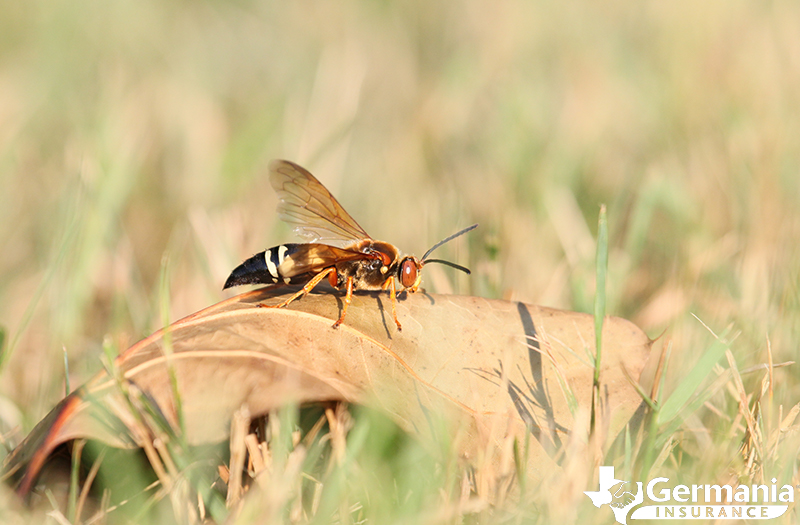
The buzz of cicadas is a distinctive sound - and with cicadas come
cicada killers. These large wasps take flight from their burrows and capture unfortunate cicadas from the trees, dragging them off to their subterranean nests for their babies (hence their name).
At around 1.5-2 inches in length, cicada killers can be frightening. The males can be territorial and intimidating, but don't actually have stingers; only female cicada killers have the ability to sting, and they aren't aggressive at all.
That having been said, their sting can be very painful and like all insect stings, there is the possibility of an allergic reaction. However, unless you are allergic, medical treatment isn't needed. Simply clean the site and manage the pain and swelling as needed.
Tarantula hawk (Pepsis sp.)
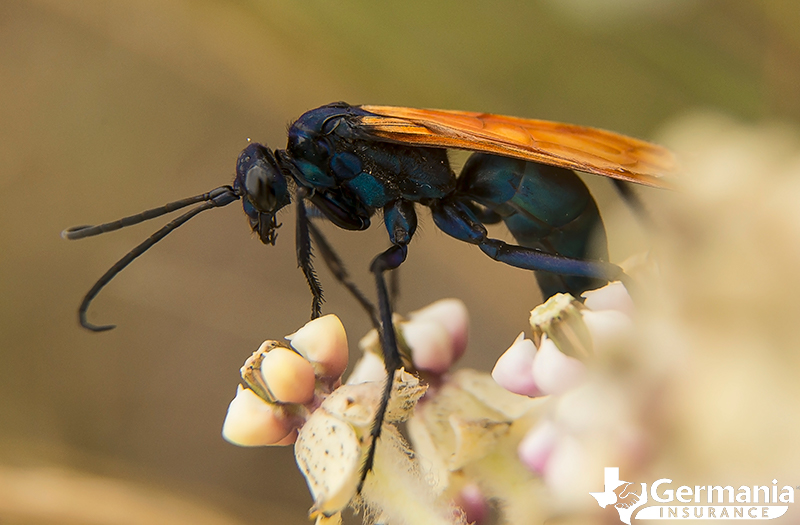
It's a bird! It's a plane! No, it's actually a giant wasp! At up to 2 inches long,
tarantula hawks are some of the largest wasps in North America and can be found in many parts of Texas. The females use their powerful stingers to paralyze tarantulas as part of their reproductive cycle.
Tarantula hawks are infamous for the excruciating pain caused by their sting. In fact, it has been described as one of the most painful stings from any insect in the world and rates near the top of the
Schmidt sting pain index.
Fortunately, unless you're a tarantula, they rarely sting unless threatened and are not aggressive towards humans. If you are unfortunate enough to find yourself on the wrong end of their stinger, no medical attention is required unless there is an allergic reaction.
Fire ants (Solenopsis geminata)

Most Texans have had a painful encounter with fire ants at one point or another, but that wasn't always the case. Fire ants aren't actually native to Texas or the United States, and are thought to have traveled here in shipping containers around the 1930's. Since then, the invasive species has spread like wildfire and have caused
millions of dollars in vet bills, livestock loss, and crop damage.
While it's common to call a fire ant sting a "bite," they actually deliver the toxin with a small stinger. A single sting is painful, but not necessarily dangerous. However, fire ants attack in aggressive swarms and an individual will often sustain dozens, sometimes hundreds, of stings at once. This is why fire ants can be particularly dangerous to small children and animals.
Most of the time, fire ant stings can be treated at home. Topical treatments, such as antihistamine and hydrocortisone, can reduce the itching and aloe vera gel can soothe the burning pain. Those with severe allergic reactions may experience swelling, loss of breath, and chest pain and should seek medical attention immediately.
Honey bees (Apis mellifera Linnaeus)
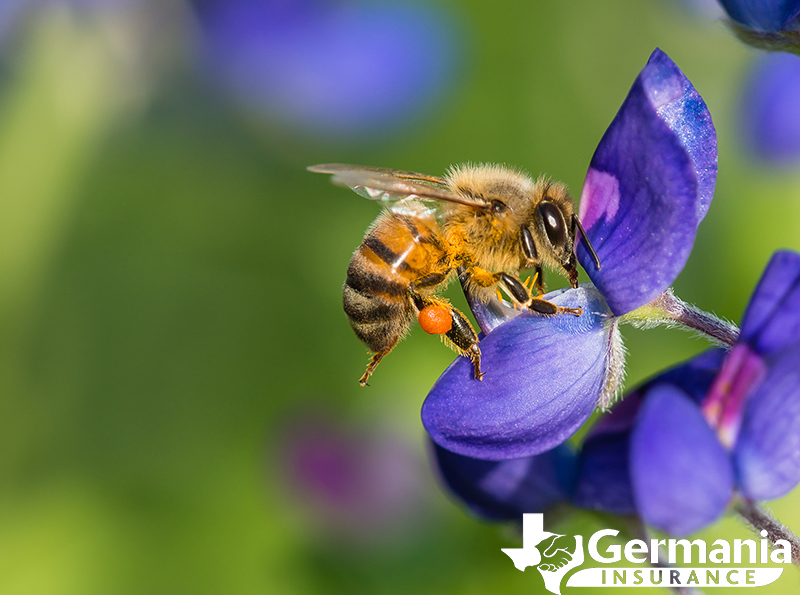
If you've ever gone out to
enjoy the spring bluebonnet fields in Texas, you've probably come into contact with these hard workers.
Honey bees are pollinators and are an important part of the natural ecosystem for fruits, vegetables, flowers, and other plants.
They aren't typically aggressive when out in the world, but will defend their hives if they feel it is being threatened. Africanized honey bees (or killer bees) can be especially dangerous if when defending their hives, but their sting isn't any different than normal honey bees. Like fire ants, the danger with killer bees is that they are more inclined to swarm, attacking a threat all at once.
Unlike wasps and hornets, bees leave behind their stinger when they attack, meaning that they can only do so once before dying. Even though the stinger is detached from the bee, it can still continue to inject venom. That's why it's important to remove it as soon as possible by gently scraping it away with a knife or even the side of a credit card; pinching it or using tweezers can squeeze the venom sac and make it worse. After removing the stinger, clean the area with soap and water and apply ice to reduce swelling. If you're allergic, or of the swelling causes breathing difficulty, seek medical attention immediately.
Paper wasps
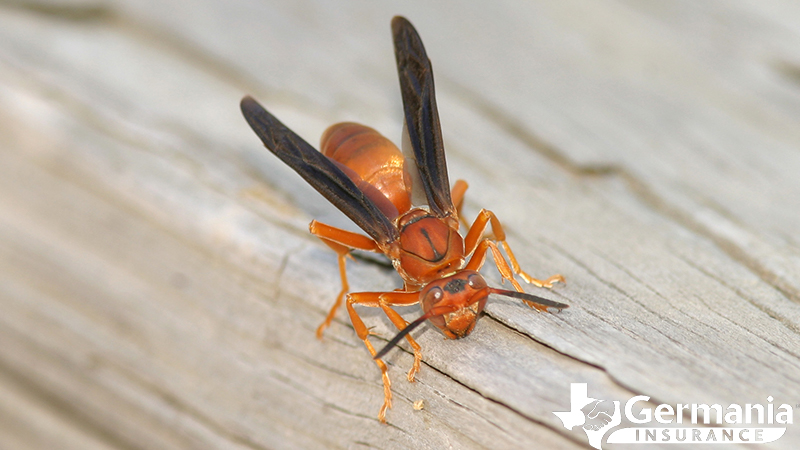
Yellow jackets and red wasps both belong to a group of insects called
paper wasps. They get this name from their nests, which they make by chewing up bits of wood fiber. While nests start off with a single individual, they can quickly reproduce and become a home to dozens. When away from their nests, paper wasps won't generally attack humans. However, they will aggressively defend their paper homes and often swarm any perceived threat.
Both yellow jackets and red wasps have painful stings and have the capability to sting multiple times. Combined with their swarming tendencies, the result can be potentially dangerous. As with other insect stings, treatment includes cleaning the sting site to prevent infection, cold packs to reduce swelling, and antihistamines for itching.
How to avoid insect stings
Leave 'em bee!
In general, the best way to avoid getting stung by any of these insects is to let them go about their business. As we've discussed, these critters have more important things to do than attack people all day. But, like all animals, they will defend themselves and their homes if necessary.
If you see one of these insects buzzing or crawling around, chances are they are minding their own business and would prefer to leave you alone. That's why it's important to make sure that you and your family understand how to identify them and know to avoid them when enjoying the outdoors.
Nest removal and extermination
When it comes to removing a population of insects, it's usually best to leave hives and nests alone if they aren't in a problematic spot. All of these insects have an important role to play in the natural balance (with the exception of fire ants, of course).
If they are in a place that you can't avoid, like above a doorway, you can find a number of sprays that allow you to eliminate them at a safe distance. However, if you are allergic, or think you could be allergic, it's best to call in the professionals. Colonies of fire ants and cicada killers can often be difficult to remove on your own, too, but pest control services will have the expertise needed to remove them.
Because bees are so important to the pollination process, removing their hives should be avoided if at all possible. Fortunately, there are specialists that can come to your home and
safely remove and relocate hives.
 With some insurance companies, filing an insurance claim can be a painful process. That's why great customer service is essential! Since 1896, Germania Insurance has been the Insurance Texans Trust for great coverage and outstanding customer service. But don’t take our word for it! Hear what our customers have to say.
With some insurance companies, filing an insurance claim can be a painful process. That's why great customer service is essential! Since 1896, Germania Insurance has been the Insurance Texans Trust for great coverage and outstanding customer service. But don’t take our word for it! Hear what our customers have to say.
For more information about our insurance products, request a free quote online, or reach out to one of our trusted agents today!
Read more: Fire ants may call Texas home, but that wasn't always the case!
Read our blog to learn more about these tiny invaders!